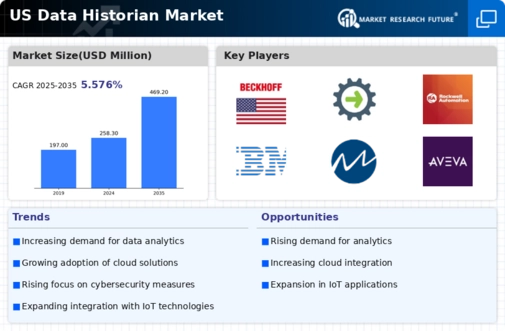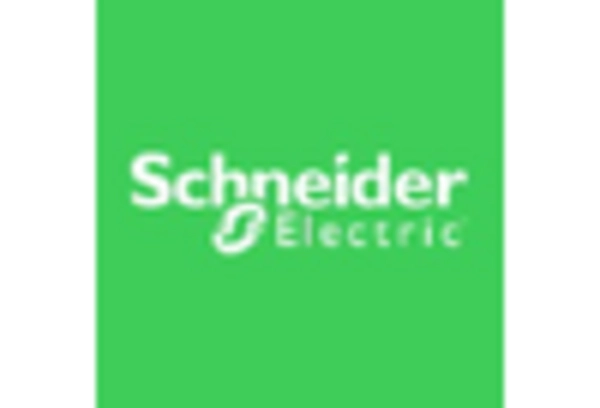Expansion of Industrial Automation
The data historian market is significantly influenced by the ongoing expansion of industrial automation. As industries automate their processes, the need for comprehensive data management solutions becomes paramount. Automation systems generate vast amounts of data that require efficient storage and analysis. The industrial automation market is projected to grow to $300 billion by 2026, which suggests a corresponding increase in the demand for data historian solutions. These systems play a crucial role in capturing and analyzing data from automated processes, enabling organizations to optimize performance and enhance productivity. Consequently, the data historian market is likely to see substantial growth as automation continues to proliferate.
Increased Focus on Predictive Maintenance
The data historian market is witnessing a growing emphasis on predictive maintenance strategies across various sectors. Companies are increasingly adopting data-driven approaches to anticipate equipment failures and reduce downtime. By leveraging historical data, organizations can identify patterns and trends that indicate potential issues, thereby enabling timely interventions. The predictive maintenance market is expected to reach a valuation of $10 billion by 2026, reflecting a robust growth trajectory. This shift towards predictive maintenance not only enhances operational efficiency but also drives the demand for advanced data historian solutions that can effectively manage and analyze large volumes of historical data.
Regulatory Compliance and Data Governance
The data historian market is increasingly shaped by the need for regulatory compliance and robust data governance frameworks. Industries such as pharmaceuticals, energy, and finance are subject to stringent regulations that mandate accurate data recording and reporting. As organizations strive to meet these compliance requirements, the demand for data historian solutions that ensure data integrity and traceability is on the rise. The market for data governance solutions is expected to grow at a CAGR of 20% over the next few years, indicating a strong focus on compliance. This trend underscores the importance of data historians in maintaining accurate records and facilitating audits, thereby driving growth in the data historian market.
Rising Demand for Real-Time Data Analysis
The data historian market is experiencing a notable surge in demand for real-time data analysis capabilities. Industries such as manufacturing, energy, and utilities are increasingly relying on real-time insights to enhance operational efficiency and decision-making processes. According to recent estimates, the market for real-time data analytics is projected to grow at a CAGR of approximately 25% over the next five years. This trend indicates a strong inclination towards systems that can capture, store, and analyze data instantaneously. As organizations strive to optimize their operations, the data historian market is positioned to benefit significantly from this demand, as it provides the necessary infrastructure to support real-time data processing and analytics.
Integration of Advanced Analytics and Machine Learning
The data historian market is poised for growth due to the integration of advanced analytics and machine learning technologies. Organizations are increasingly seeking to harness the power of these technologies to derive actionable insights from historical data. The machine learning market is projected to reach $30 billion by 2025, which suggests a growing interest in leveraging data historians for predictive analytics and decision-making. By combining historical data with advanced analytical tools, businesses can uncover hidden patterns and trends that inform strategic initiatives. This integration not only enhances the value of data historians but also positions them as essential components in the broader data analytics ecosystem.

















Leave a Comment